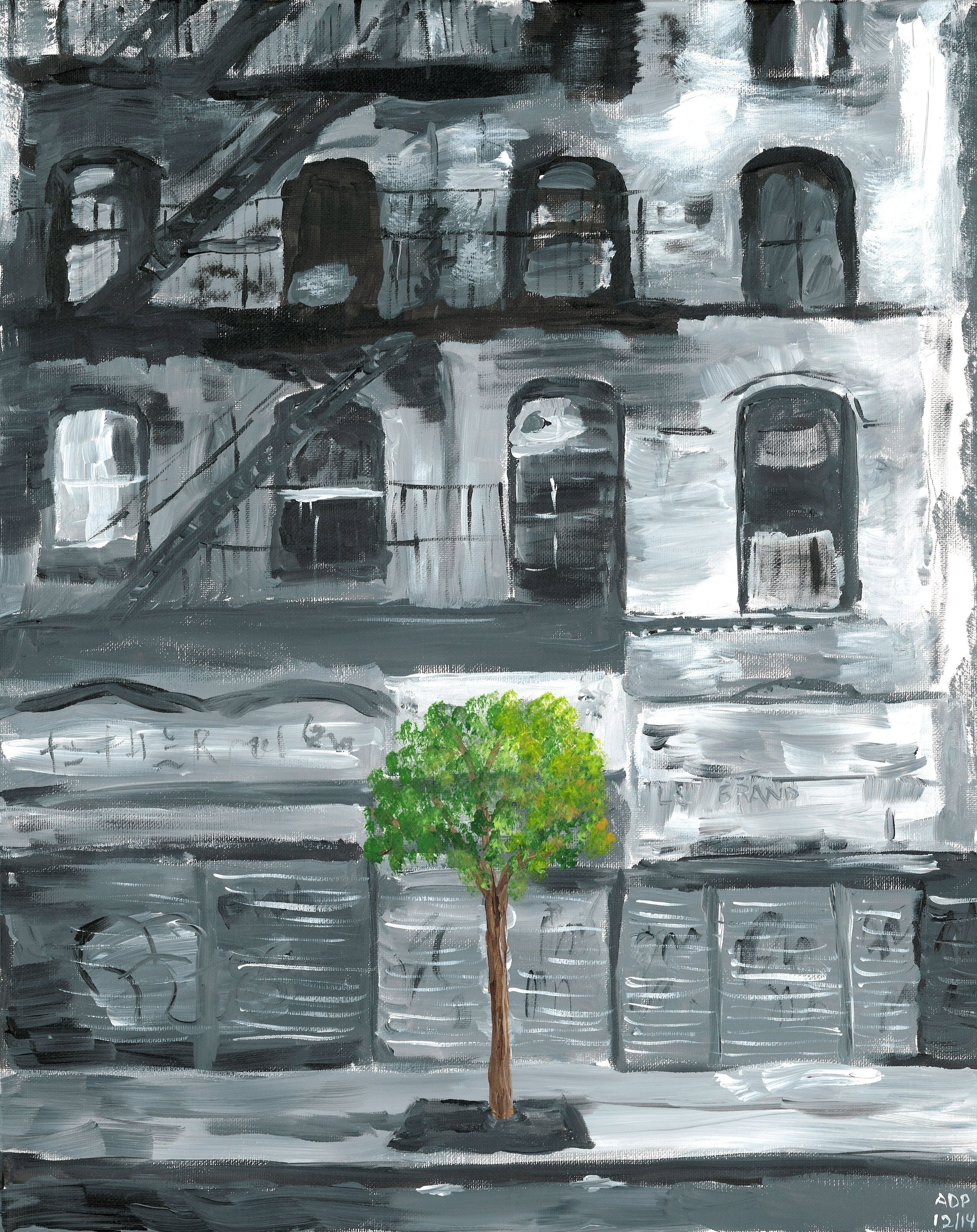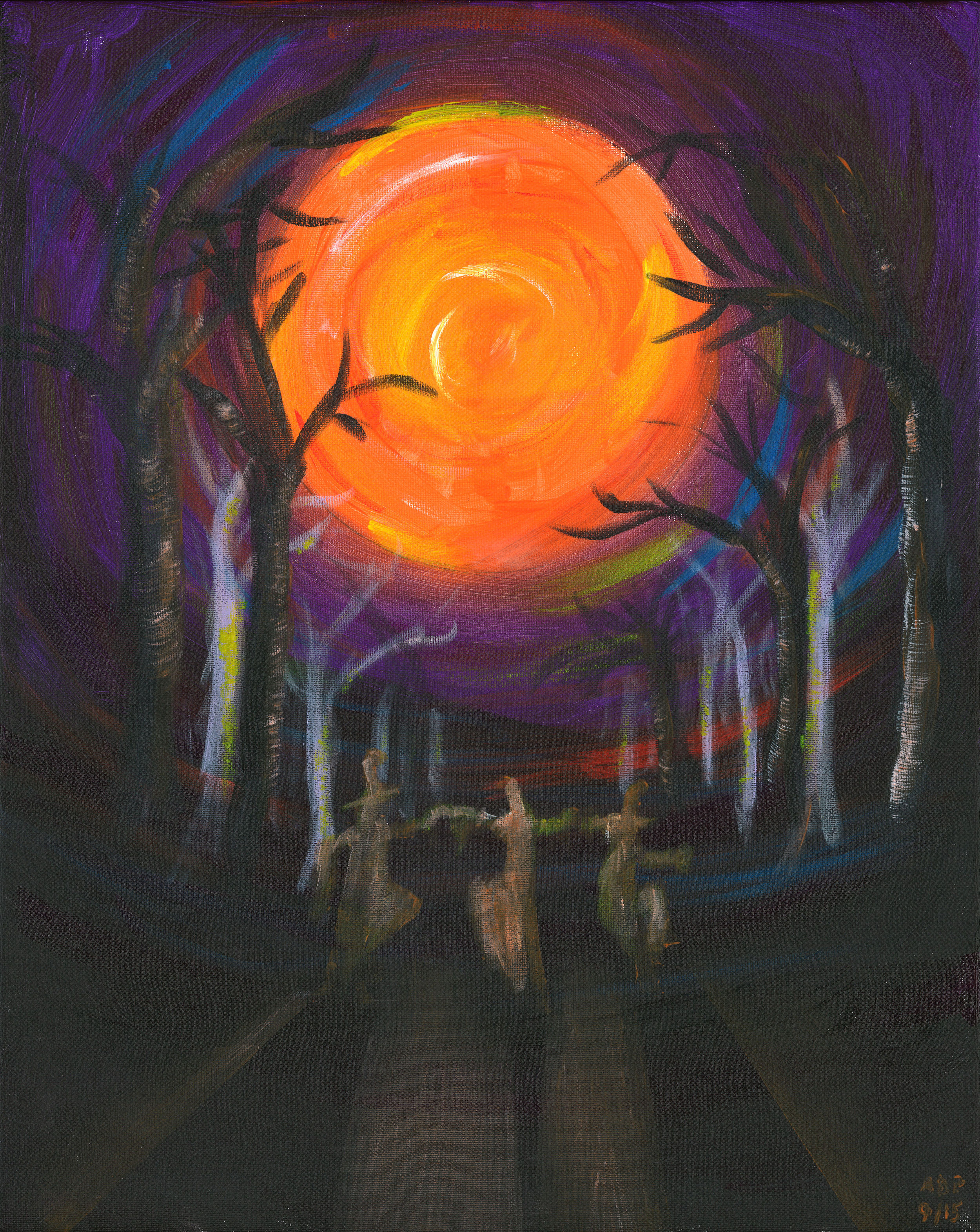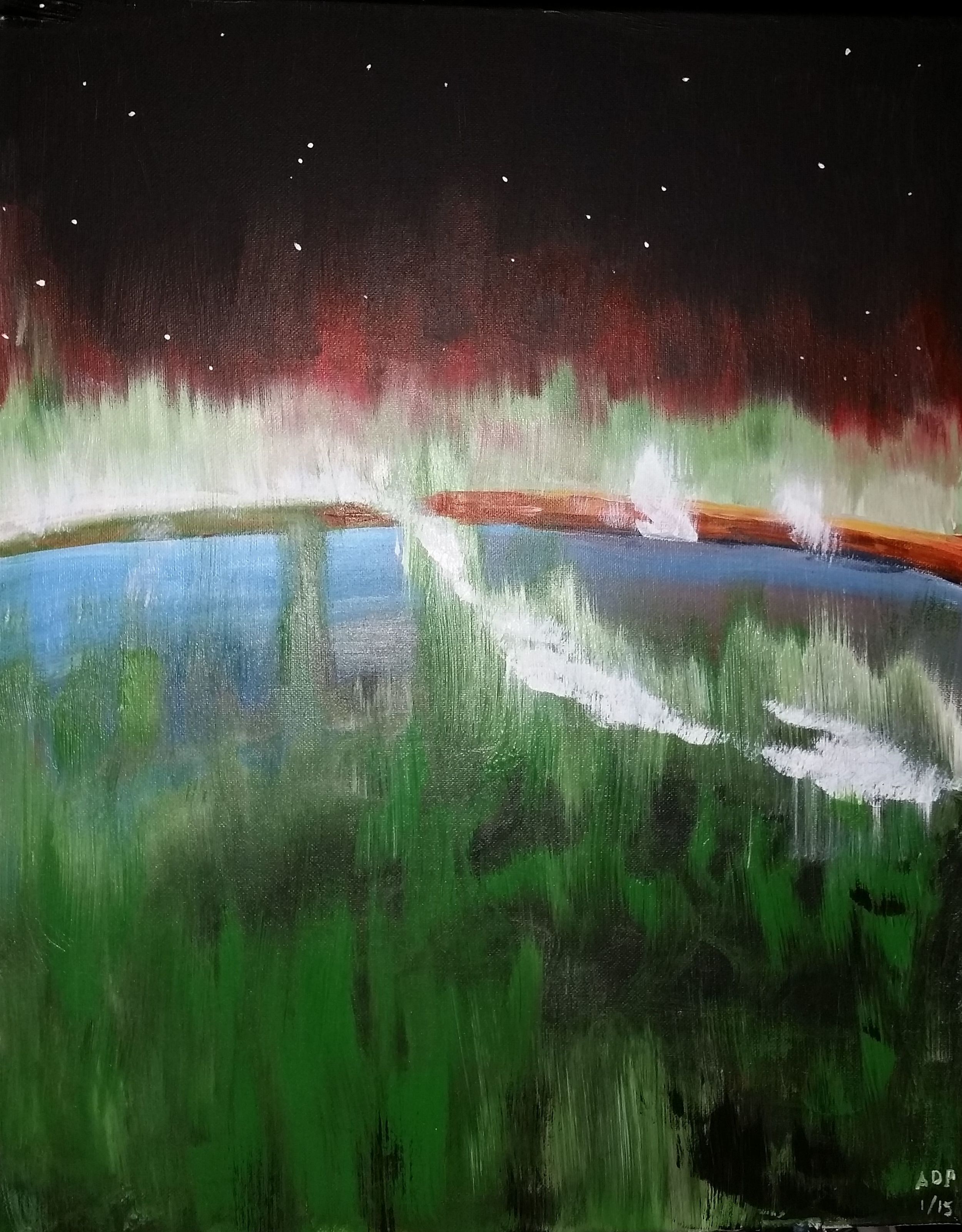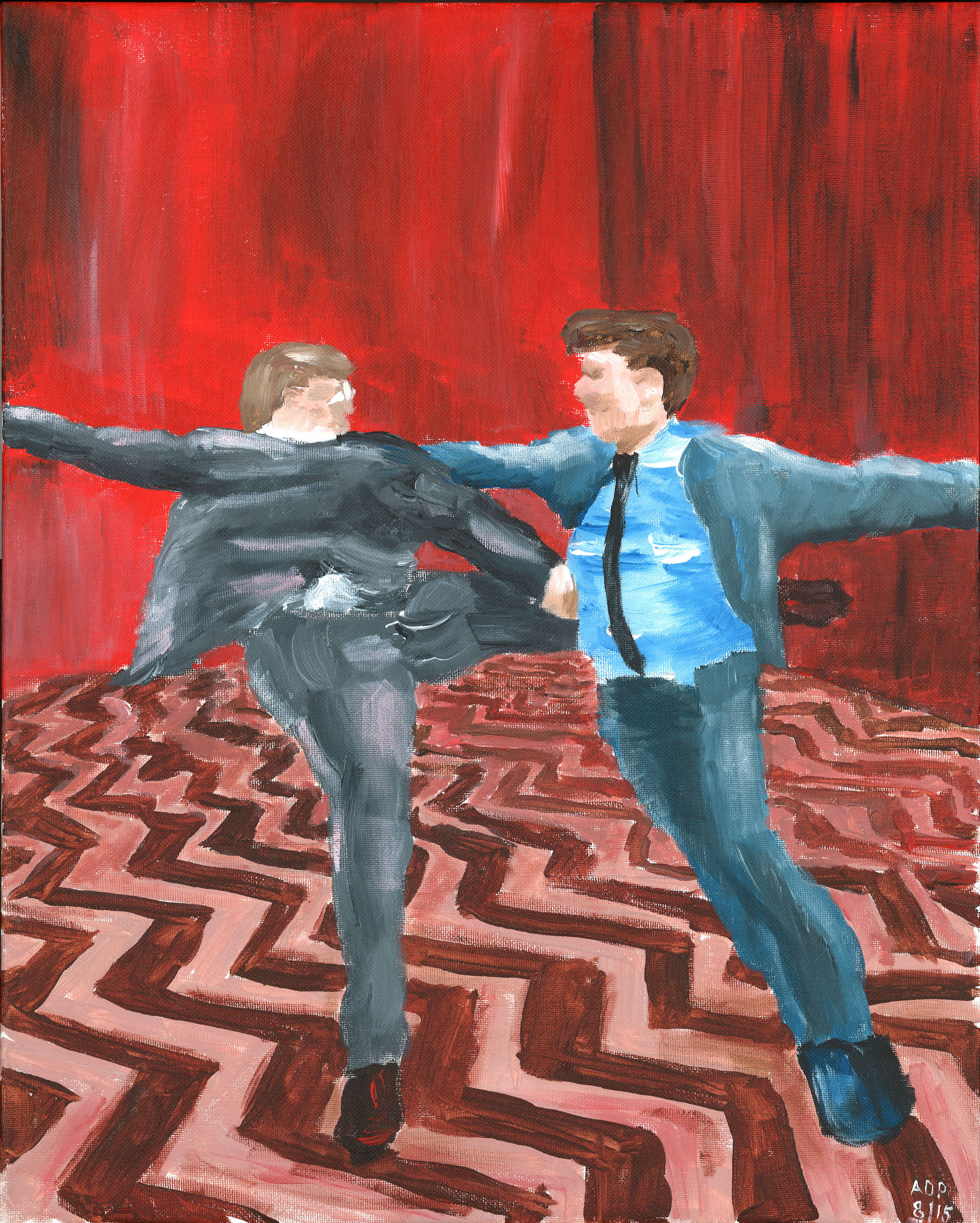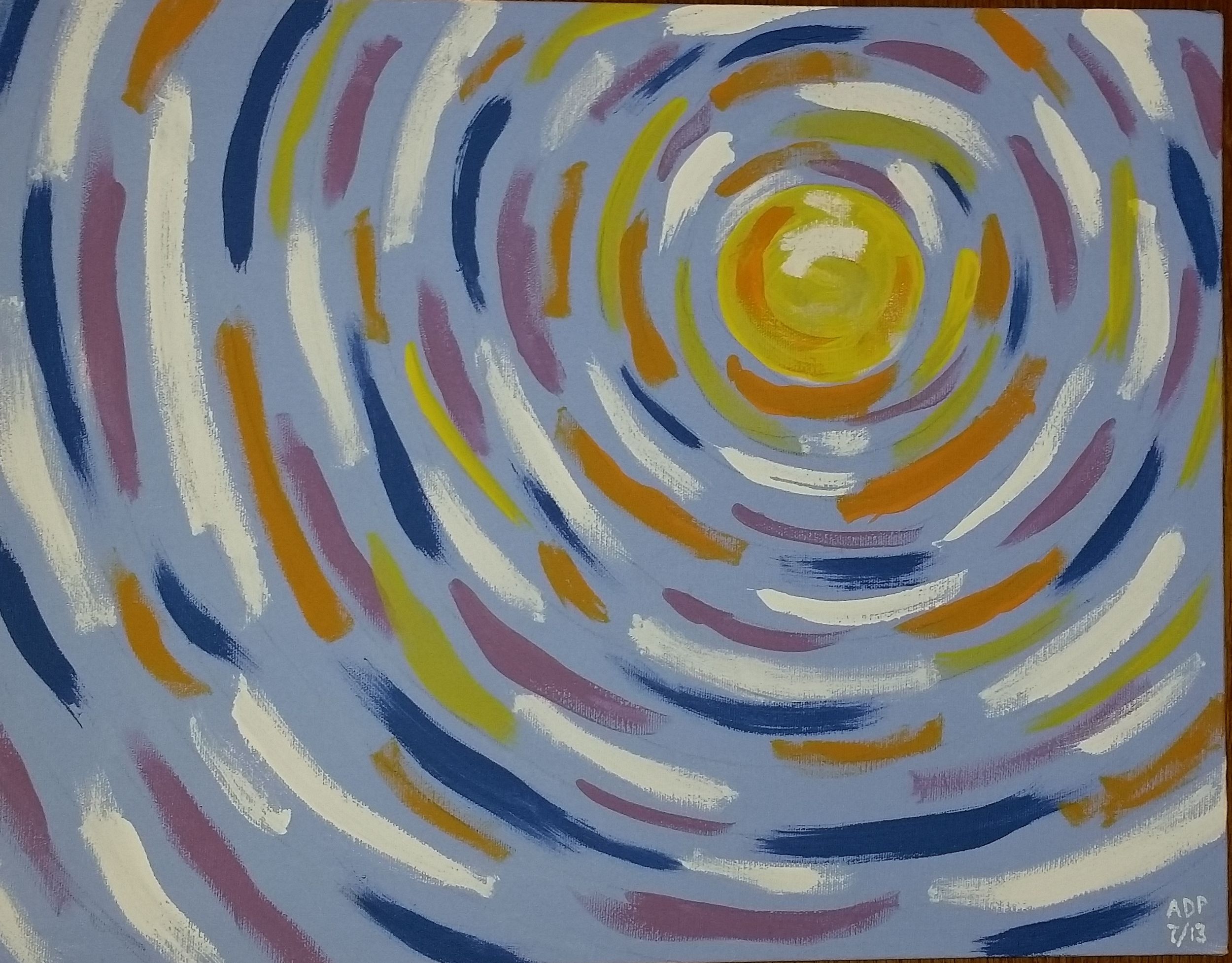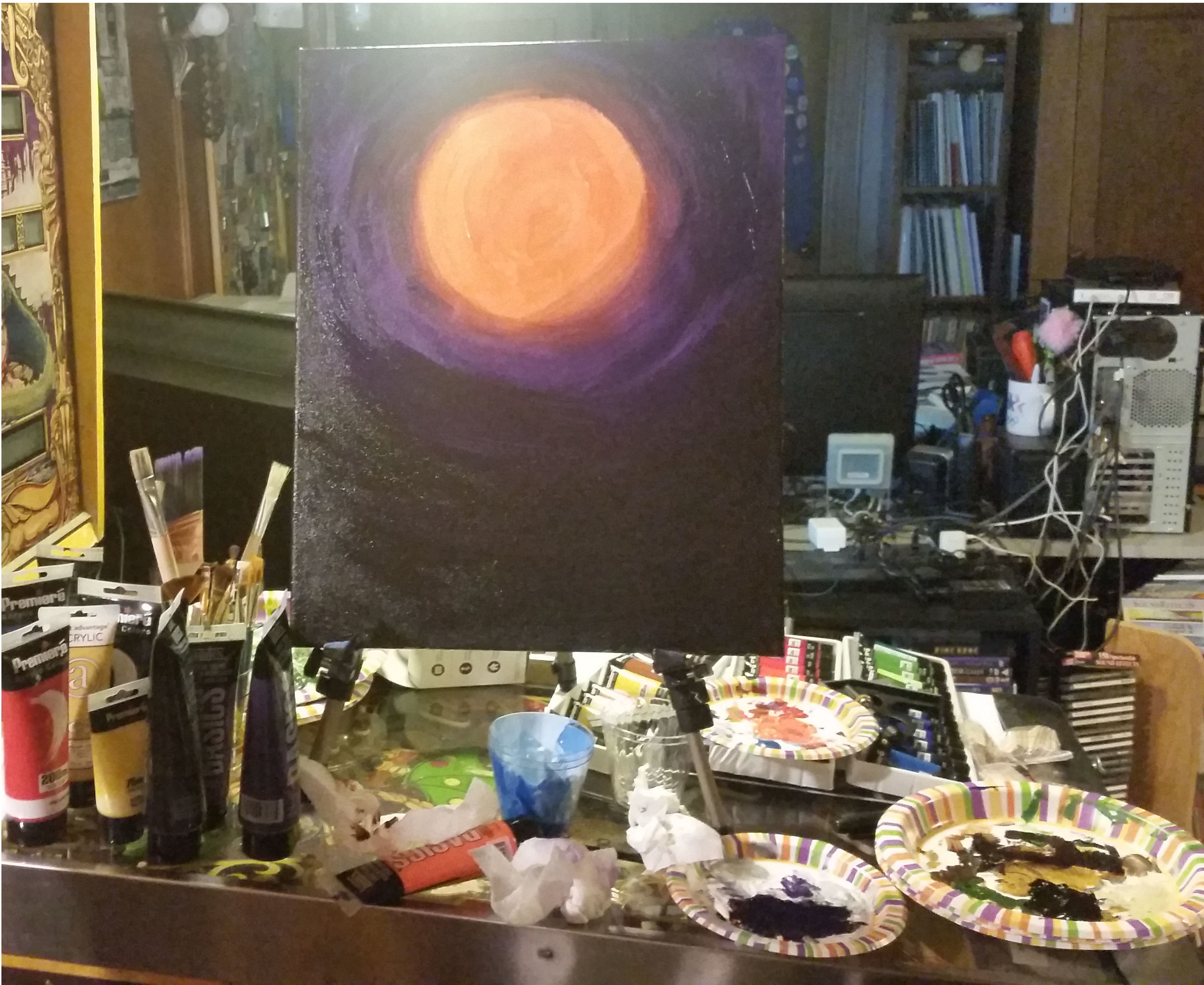by Allison Heim
The final haunting notes of Remember the Molecules emanate from a vibraphone, ringing out across the auditorium before giving way to silence and stillness. The conductor slowly drops his arms and the musicians relax in their seats. Applause sweeps over the auditorium. The conductor bows, gestures towards the ensemble, then turns to the crowd and points. A tall, bespectacled, young man rises from his seat. Casually dressed in jeans and a hoodie, composer Michael Markowski nods politely to the conductor.
The twenty-seven year old Arizona native relocated to New York in June of 2012 and has quickly become a fixture in the wind band community. I sat down with Markowski in advance of Brooklyn Wind Symphony’s performance of his piece Remember the Molecules at the 2013 Midwest Clinic to learn about how he got started composing, the Midwest Clinic experience, and new projects he’s working on.
When did you begin making music?
I joined band in fifth grade playing the saxophone. I joined out of peer pressure because two of my best friends were joining. One was playing the trumpet, and one was playing trombone. I originally wanted to play trombone but my mom said “Don’t you want something with more keys on it?” and I said “I guess you’re right!” I didn’t know anything about music, so I picked saxophone and joined band that way.
When did you begin composing?
I started writing music in seventh grade. My dad’s sort of a keyboard player. He plays Elton John, Billy Joel kind of things. He plays it, can’t really sing it, tries to sing it. There’s always been a piano in the house. He used to be a computer programmer, so he’s into all the tech, midi, synthesizer stuff. We’ve always had that in our house.
For Christmas in seventh grade, I really wanted a TV for my room. My brother got a TV and I got a synthesizer, and I was so pissed. I was so mad because I really wanted to just watch TV in my room. So I got a synthesizer and I said “I guess this is OK.” My dad eventually hooked it up to my computer and installed some sequencing software on it for me and some bootleg version of Finale. Just as soon as I got into it and it was set up, I was addicted to it. I didn’t do sports. Every day after school I would just go home and write. And eventually I got a TV in my room, it was win-win.
I would just mess around on Finale and have the synthesizer play it back, play the sounds and the music back. I was inadvertently teaching myself theory and orchestration, all at the same time. I would just write, write songs.
Have you asked your dad why he gave you a synthesizer, rather than say, the coveted TV?
I think he was just trying to pass on a hobby of his to me. He knew I was interested in music and I think he was just trying to encourage that a bit more in a way that he knew how. I had been playing saxophone for two years at that point. I had just started junior high.
When did you start considering music as a career?
As a seventh grader, my band director moved me up to the ninth grade band. That was the first time anyone said “Hey, you’re pretty good at this. We’re going to challenge you a little bit more.”
I think I’d make a terrible teacher but I admire teachers so much. I mean obviously I wouldn’t be here talking with you if it wasn’t for my own teachers. Not that they kept giving me things, but they created opportunities for me. I could either take that opportunity and really take advantage of that or not. And if they gave me an opportunity, I would take them up on that.
For instance, when I just got to high school, my band director [Jon Gomez]. I took summer composition lessons from him. I had written this choir tune and was workshopping that with him over the summer. He said “Hey, you should transcribe this for band. This would be a real nice large ensemble thing.” So I said “OK,” so I did [transcribe the piece for band]. And it, of course, like everything, just turns into something completely different. He was awesome enough that, once school started again, we spent thirty minutes reading through the piece. That was the first time I’d ever had a large ensemble piece read through before.
It’s this really slow piece because my brain couldn’t function any faster at that time. Halfway through there’s a random Charlie Parker solo. Because, as a sax player, I was just like “Here’s something cool for my friend playing lead alto.” And it’s so bad. I have the entire rehearsal recording still. It’s very humbling to go back and listen to it because halfway through, it’s a train wreck. It’s so slow. I’m not sure where we are. The band just falls apart and we stop. And then all you hear is giggles and laughter. And I was just like, ehhh, OK. This was in eleventh grade.
It’s incredible you were able to get your piece read by any ensemble.
What ended up happening is I sat with him in his office and he went through the score and he made notes in my score, including, in red pencil, I think around that Charlie Parker solo, he just writes “What the hell” in the score. At that point I was like “Ok, I’m gonna rework this.” And so I ended up reworking it three more times. There were four revisions to this tune. I always rewrite, even now. And after the fourth revision, it was kind of cohesive and the band was kind of understanding it. And so he decided to program it at our December concert. That was the first [piece of mine performed]. That was a piece called Blue Ambiance.
How did you feel the first time you heard an ensemble play your music?
Nervous as all get out. As an eleventh grader, there’s a lot of seniors in the band who are looking at me going “Who is this guy and why are we spending this time on him?” which was humbling. I was prepared for that. I wasn’t prepared for the laughter.
I always tell young composers get your music read because you’ll learn a hundred things. You don’t have to have anybody tell you. It’s like when you’re developing a new show like a musical or a play or something like that. Just putting it in front of an audience, in front of real people. You don’t even need their feedback, necessarily. You know what works. You get a real sense of what’s working and what’s not just by the tension in the room.
You’re the first winner of Manhattan Beach Music’s Frank Ticheli Composition Contest. How did you find out about the contest and end up victorious?
Bob Margolis is the main guy at Manhattan Beach Music. I emailed him first when I was fifteen because I really liked this piece he wrote called Terpsichore, awesome piece. I sent him Blue Ambiance and said “Hey, what do you think about this?” He sent me some comments back. “It’s great. It’s not quite there yet, but wow, what potential.” And then, the second piece I wrote in high school that we did. Our band, choir, and orchestra went to Carnegie Hall. Again, my director offered me the opportunity to write an opener for us. I wrote this piece called Joy Ride. I had a website then. I posted it. Bob found a recording of Joy Ride literally a month before this contest deadline. And he said “Hey, I just listened to Joy Ride. I think you should enter this contest. Frank Ticheli just wrote Joy Revisted. Joy is in the air.” When the guy who’s calling the shots tells you to enter his contest, you do that. So in about three weeks, I wrote Shadow Rituals. It’s my most performed piece, by a long shot. That started to open up doors, as soon as I won the competition.
Who were you working with at that time?
There’s two people. My high school director, Jon Gomez. In tenth grade, I started studying with a doctoral student at Arizona State University in composition, Karl Schindler. So I started studying with him every couple of weeks. Bringing in my work, he’d make some comments and he’d play some stuff “Did you think about this?” Just a super cool guy. Just before I moved from Arizona, I’d still show him pieces. I was singing in a community choir with him and his wife, just awesome.
What’s it like working with a community band like Brooklyn Wind Symphony?
One of the things that really fascinates me about community ensembles like this is the fact that everyone has such a different background. There are some people that are trained at conservatories but then there are people whose day jobs are in marketing, doing this and that, but that still come play and everyone brings a diverse background. When you have such a cool project like this, you utilize your background. Everyone comes together with their niche to really do something awesome for the ensemble. I think that’s one of the main reasons I like hanging with the Brooklyn Wind Symphony.
Most of the ensembles I work with are high schools, a couple universities occasionally. Brooklyn Wind Symphony is a remarkable group. I’m so lucky that I can call up Jeff [Ball] and say “Hey, I’ve got this new piece. Do you have time to read it for me?” Let’s see what happens with it, let’s see where I made mistakes. He’s so enthusiastic about it.
Brooklyn Wind Symphony is opening their performance at the Midwest Clinic with your piece Remember the Molecules. What is the significance of having one of your pieces performed at the Midwest Clinic?
It’s an amazing experience because it’s one of the most knowledgeable and therefore, appreciative audiences that you’ll ever play for. It’s probably one of the biggest in terms of numbers too. Even the Saturday morning performance, there’s like fifteen thousand people that go to this convention. The Saturday morning performance is still going to have like a thousand people at it, we hope. That’s a whole lot of people. There’s no crying babies, there’s no cell phones going off. There is such an intense focus. It’s like when [composer David] Maslanka came to work with Brooklyn Wind Symphony, he said “Ok, yeah, you’ve got fifty measures of rest but you still need to be in that moment. There’s a thousand people in that room, in that moment, with you guys.” That’s pretty remarkable. The audience is remarkable. And of course, all of your friends and family sit in the front row, first on their feet.
Having a piece performed is a great honor because it’s for that particular audience. It’s very rare.
How does New York City compare to your previous experience out west?
Back in Arizona, Arizona’s so spread out. I was really lucky, even not being a music major at Arizona State. The director of bands there, Gary Hill, still was able to organize half an hour at the end of the semester. He’d get me in contact with a graduate student in conducting to read my new pieces. Instinctive Travels and Turkey in the Straw were both read and workshopped there. And they, of course, premiered Shadow Rituals, which is remarkable because I was not a music major.
When I moved to New York, suddenly Brian [Worsdale, director of Grand Street Community Band] and when I met Jeff [Ball], and Andy Pease when he was at Columbia. Suddenly, it was just “Oh my god, there’s a band composer in New York! First of all, what are you doing here? Second of all, can we play your music?” It was remarkable just the amount of love I received as soon as I moved here. And that’s just primarily due to Brian and Jeff. In that respect, it’s been phenomenal. I don’t think I’d have that in LA.
What is the latest project you’re working on?
I just finished Voyage Trekkers, Season 2. I had a lot of fun doing that. Voyage Trekkers is a web series. It’s a sci fi comedy. Think Star Trek meets Arrested Development. This is the worst crew in the galactic union. They’re just terrible people. They want to be heroes so bad, but it just never happens. My friends in Arizona act in it. write it. create it. It’s very much an Arizona-based production. I do the music for them. This season I hired a fifty-nine piece live orchestra from Europe. I had ninety minutes with them to record Episode 1 of Season 2, totally live.
What does that process look like?
The session is ninety minutes. Fifty-nine musicians, a pro-tools guy, a conductor, and a translator. The schedule for Season 2 is pretty flexible because they film some of these episodes way ahead in time just because it’s an independent thing, they all have day jobs. It’s going to take awhile for this to actually ship and be out there. I had at least a locked cut, like a fine cut, well in advance. I had already scored a couple of other episodes before Episode 1. They cut the episode early because they were waiting on special effects that were going to take forever. They look amazing. I had a cut, and I actually didn’t tell the director, but I produced a live score by myself. I didn’t tell him I was going to. I was just like “Surprise! Live score!” It was sort of a surprise for him because Episode 10 is done with a wind band from Northern Arizona University. He knew about that. After seeing Episode 1, I was like “This is the episode that everyone’s going to start to watch. They may not make it all the way to Episode 10. We need to make sure Episode 1 is smokin’. Let’s pull out all the stops for Episode 1,” so I did.
I wrote the music. I think I sent him mock ups. I purchased ninety minutes with this orchestra. It was all done live via Skype. We had seven minutes of music to record in ninety minutes. That’s a lot. On average, you can get maybe three or four minutes of really good, well-rehearsed music, in an hour. Because, you have to understand, these people are sight reading. This is a sight reading gig, they’re not getting this in advance. They’re reading through a cue two or three times before taking it two or three times. So that’s six runs through for one cue. If the cue’s one minute, you’re at least spending ten minutes on that cue. We had seven minutes in ninety minutes. We made it happen.
Do you want to do more film scoring?
My background is in film. I have an appreciation for that. I speak director terms and musician terms. Those are two different languages. A lot of the directors I’ve worked with, they don’t know how to speak musician language so they don’t know how to communicate what they want, which makes things very difficult and makes it a lot harder to get on the same page. Of course, I have an appreciation for editing and cinematography. Any time I write to visuals, I keep those things in mind. I look at the pacing of the tracking of the dolly, and I look at how quickly things are cut and edited, how quickly that wipe...is that a two second wipe or is it a two frame wipe? Because those things clue me in on what the music should say. I love collaborating in that respect.
Brooklyn Wind Symphony is performing your piece Famishius Fantasticus at their June concert. Tell us a little bit about it.
Famishius Fantasticus hasn’t been performed many times, because It falls in the category of something that is a bad word, and the bad word is the N word. It’s novelty. I think it’s amazing music. It’s some of the best music I’ve written. When people hear it, they immediately think “circus” music, and that’s a bad word in band repertoire. Suddenly, it’s that’s just like “Oh, that’s just for entertainment and there’s not really a lot of heart behind that.” I hate that, It’s such a quick dismission of music. I love that piece. It kinda fits my character and my background. This is a fun piece. Audiences are going to like it.
I just got an email yesterday. Chuck Jones is the director of a bunch of Looney Tunes. He’s not around anymore, but there’s an organization called the Chuck Jones Center for Creativity that puts out, they’re in LA, they do a lot of classes for children - how to draw and do all this. Every year they do a big birthday celebration for the late Chuck Jones. There’s an LA band that just performed it. I sent the [Chuck Jones Center for Creativity] the recording, and they’re like “Hey this is awesome, maybe we can get them [California State University, Northridge Wind Ensemble] to come perform at the celebration next year.” For me, that is the greatest honor for that piece because it’s an homage to Chuck Jones and Carl Stalling. And now, Chuck Jones’ kids are going to hear this piece, possibly. That is cool. That gets me excited.
